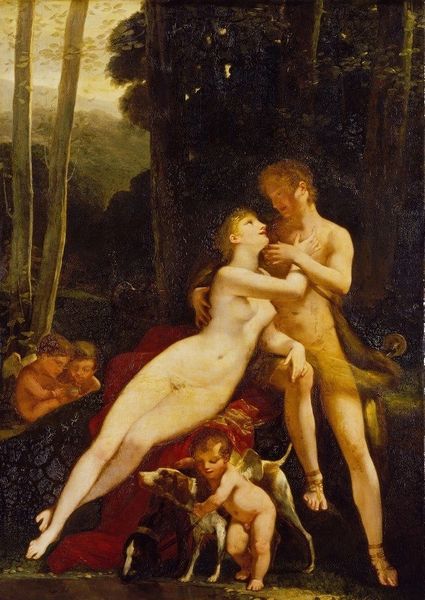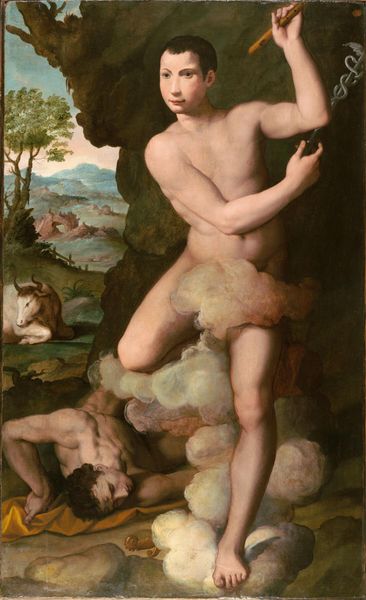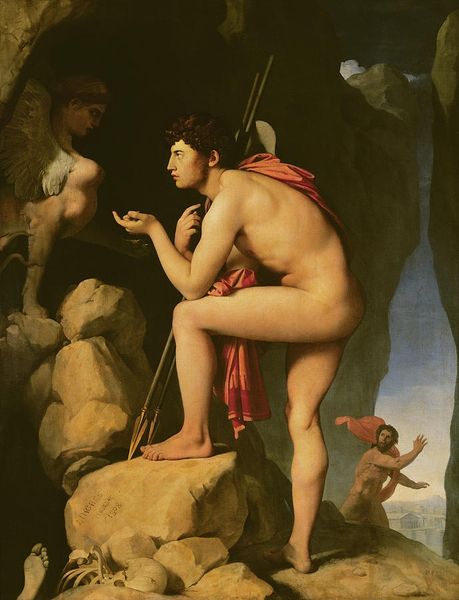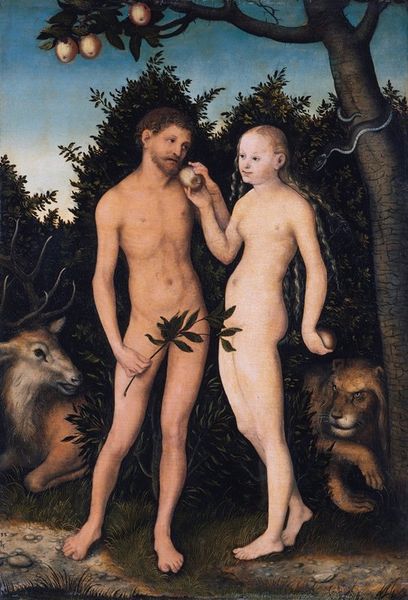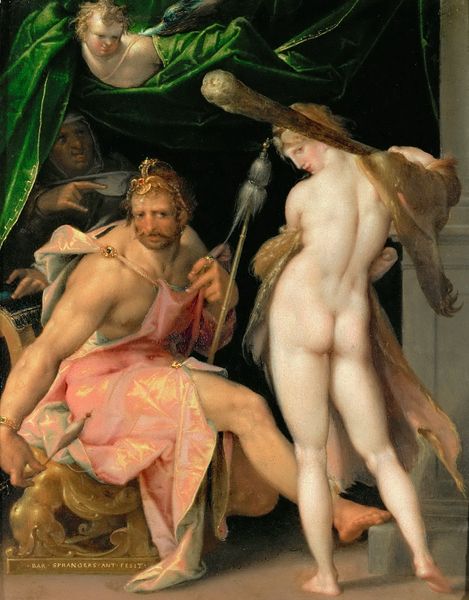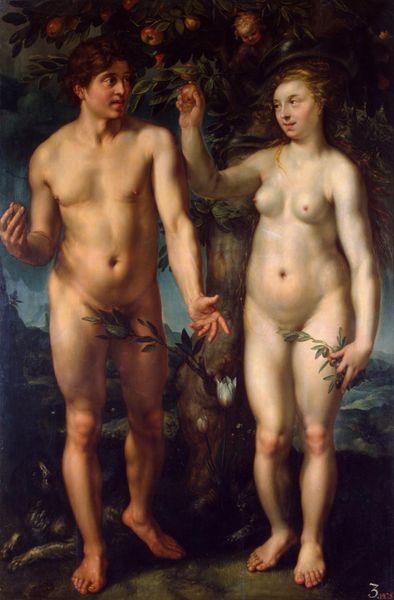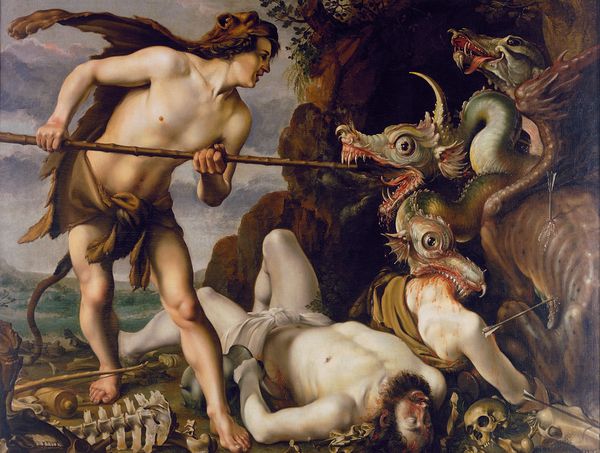
Apollo and Diana 1530
0:00
0:00
lucascranachtheelder
Royal Museums of Fine Arts of Belgium, Brussels, Belgium
panel, painting, oil-paint
#
panel
#
painting
#
oil-paint
#
landscape
#
figuration
#
11_renaissance
#
roman-mythology
#
classicism
#
mythology
#
history-painting
#
northern-renaissance
#
nude
Copyright: Public domain
Curator: First impressions—well, the color palette feels…earthy, I guess. The composition is a bit awkward, wouldn't you say? Apollo looks like he's about to trip, and Diana looks incredibly bored atop that rather uncomfortable-looking stag. Editor: Indeed! Let's delve into this curious piece. What we have here is Lucas Cranach the Elder’s "Apollo and Diana," created around 1530. It's an oil painting on panel and hangs here in the Royal Museums of Fine Arts of Belgium. Curator: Cranach. Always so distinctive. What is it with these Northern Renaissance painters and their strange nudes? It's like they've never actually seen a naked body before. Seriously, those figures are like gingerbread people that someone left in the oven too long. And what’s with that castle plopped right onto that odd crag? Is that symbolism I sense, or just odd proportion? Editor: I would argue that, on one level, these figures can be understood as intentionally allegorical. Renaissance art saw the nude as symbolic—not just anatomical study. The slight awkwardness you mentioned becomes fascinating once you grasp the layered symbolism at play. Apollo, eternally youthful and idealized in posture, ready to loose an arrow; Diana serene atop her deer, as symbols of virtue and grace. Look closely and they aren’t so awkward but stylized with purpose, revealing ideal forms of humanism itself. The odd castle? Represents safety, order, power. Curator: I get what you are saying, I suppose…It feels more about portraying concepts than people. Their stillness…it almost feels performative, like posing in a tableau vivant rather than being caught in a moment. Editor: Exactly! Remember that cultural memory often resided in the iconic, the staged, the deliberate—even in what appears, at first glance, as naivete in the treatment of form. It becomes a dance of visual language steeped in philosophical meaning that echoes classicism through a northern European sensibility. Consider, too, the use of landscape. A dark background is pierced by light where Apollo resides, suggesting his presence brings life where Diana rests with hers, indicating their place within the cosmos: it's an ecosystem they generate. Curator: Fascinating, to consider it within the language and context of its symbols, to let go a bit and swim in its waters. I’m starting to see that awkwardness isn't a flaw, but a thread connecting us to their world—an intriguing one at that! Editor: Precisely, it's about attuning our vision. This piece by Cranach has revealed its deeper logic: where we find history, cultural transmission, and, perhaps unexpectedly, even emotion within its composition and symbols.
Comments
No comments
Be the first to comment and join the conversation on the ultimate creative platform.

